Mercedes-Benz C Class Cluster Design: Ultimate Luxury
The Mercedes-Benz C-Class represents a pinnacle of automotive luxury, and its instrument cluster is a key focal point of this sophisticated experience. Understanding its design and functionality allows owners to fully appreciate their vehicle’s advanced technology and refined aesthetics. This guide will delve into the evolution and intricacies of C-Class cluster design, highlighting what makes it the ultimate expression of luxury for discerning drivers.
Welcome to MercedesBlue! As your guide to all things Mercedes-Benz, I’m thrilled to explore the captivating world of the C-Class instrument cluster. For many, the dashboard is the primary interface with a vehicle, and Mercedes-Benz consistently sets the standard for elegance and innovation here.
The C-Class, in particular, offers a digital cluster that is not just about displaying information but is a masterclass in luxury design. We’ll break down what makes it so special, from its visual appeal to its user-friendly technology. Let’s dive in and discover the ultimate luxury of C-Class cluster design together!
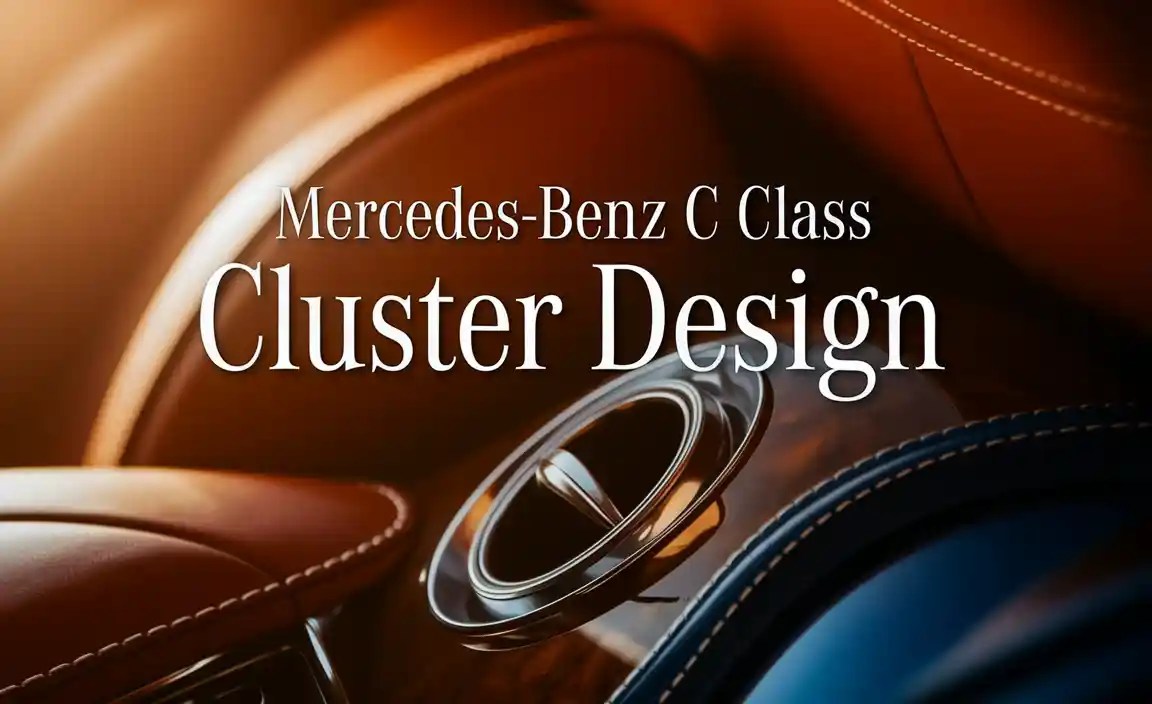
The Evolution of the C-Class Instrument Cluster
The C-Class has always been a benchmark for its segment, and its instrument clusters have mirrored this progress. From the analog dials of older generations to the fully digital displays of today, each iteration has aimed to blend functionality with sophisticated style.
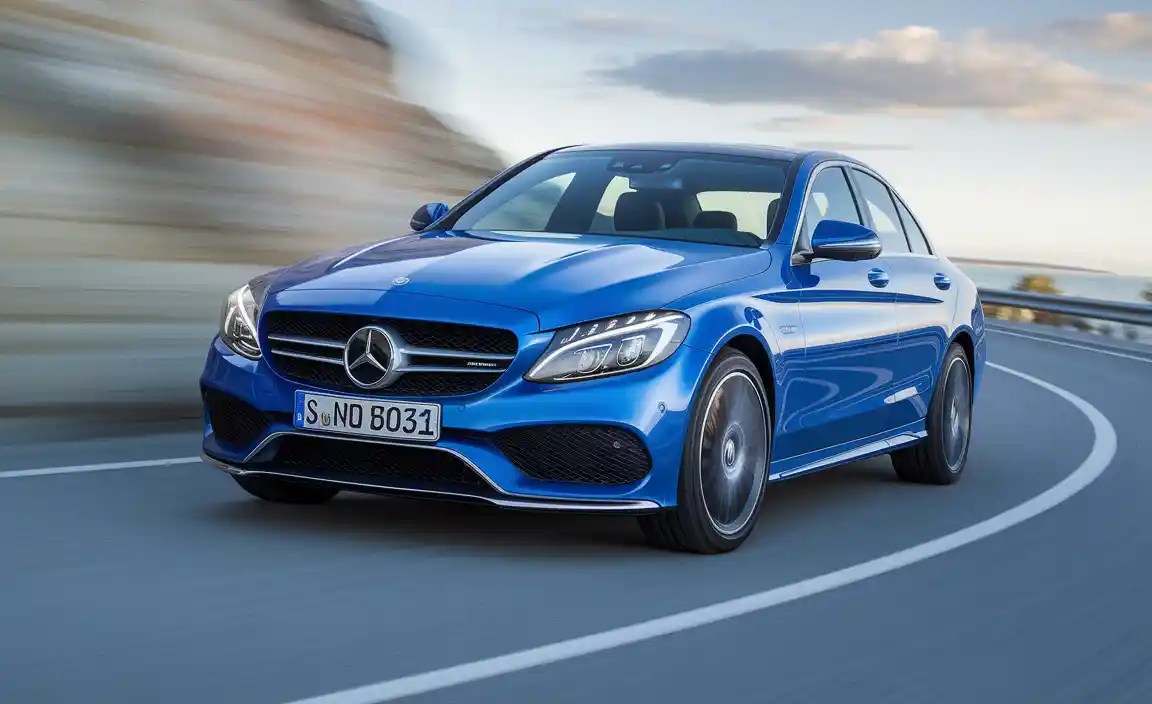
Originally, traditional physical gauges offered a sense of classic automotive charm. However, the advent of digital technology brought about a revolution, allowing for greater customization, richer information display, and a decidedly modern aesthetic that aligns perfectly with the C-Class’s persona.
Early Generations: Classic Analog Charm
In the earlier iterations of the C-Class, the instrument cluster typically featured a set of classic analog dials. These included the speedometer, tachometer, fuel gauge, and temperature gauge. While functional and aesthetically pleasing in their own right, they represented a more traditional approach to automotive design. The focus was on clear, immediate readability, with a certain mechanical beauty inherent in the moving needles and classic typography.
The Digital Revolution: Setting New Standards
With advancements in automotive technology, Mercedes-Benz began integrating digital displays into the C-Class. This transition marked a significant shift, moving beyond static gauges to dynamic, configurable screens. The first significant moves towards digital integration often involved smaller LCD screens nestled between analog dials, providing supplementary information like trip computer data, range, and warning messages. This offered a glimpse into the future, blending the familiarity of analog with the versatility of digital.
The Modern Era: Fully Digital Displays
The current generation of the Mercedes-Benz C-Class features a prominently positioned, fully digital instrument cluster. This isn’t just a screen; it’s a sophisticated display designed to immerse the driver. The high-resolution display can be customized to show a wealth of information in various styles, catering to different driving preferences and informational needs. This fully digital approach has become a hallmark of modern luxury vehicles, and the C-Class executes it with exceptional grace.
Key Design Elements of the C-Class Digital Cluster
The modern C-Class instrument cluster is a work of digital art, blending cutting-edge technology with an uncompromised commitment to luxury. Its design isn’t accidental; every element is carefully considered to enhance the driving experience and reflect the vehicle’s premium status.
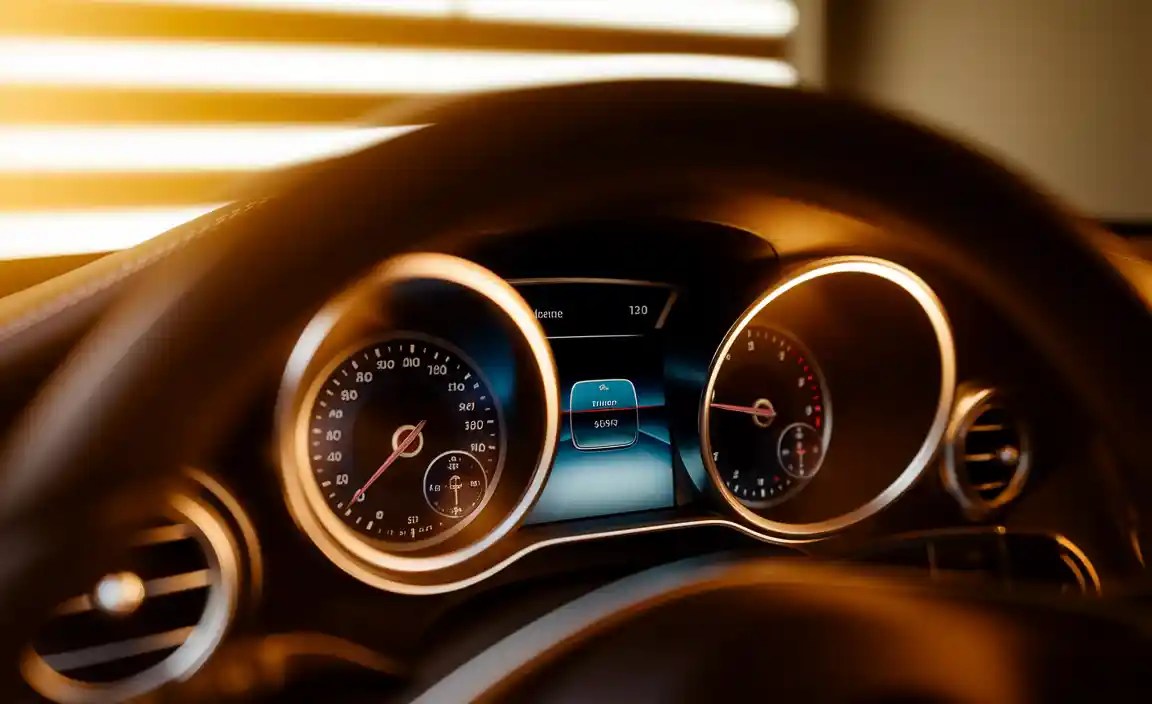
High-Resolution Displays
The cornerstone of the modern C-Class cluster is its stunning high-resolution display. These screens boast vibrant colors, sharp graphics, and excellent clarity, making information easy to read under any lighting conditions. The crispness of the graphics contributes significantly to the overall premium feel, transforming raw data into visually appealing elements.
Customizable Layouts and Themes
One of the most significant advantages of a digital cluster is its adaptability. The C-Class allows drivers to personalize their display by choosing from various layouts and visual themes. Whether you prefer a minimalist view focused on essential driving data, a sportier layout with prominent RPMs, or a more information-rich dashboard, the system can be tailored to your exact preferences. This customization enhances usability and allows the driver to curate their personal luxury space.
Popular Display Styles:
- Sporty: Emphasizes performance metrics like engine speed and power output.
- Progressive: A modern, sleek look with prominent navigation and media information.
- Classic: Mimics the appearance of traditional analog dials for a familiar feel.
- Minimalist: Shows only the most critical driving information for a clean, uncluttered view.
Intuitive User Interface
Navigating the cluster’s features is designed to be seamless. Mercedes-Benz employs intuitive controls, often integrated into the steering wheel’s touchpads or buttons, allowing drivers to cycle through menus, select displays, and adjust settings without taking their eyes off the road for long. This focus on user-friendly interaction is crucial for a luxury experience, ensuring that technology enhances, rather than distracts from, the drive.
Integration with MBUX (Mercedes-Benz User Experience)
The digital instrument cluster is an integral part of the MBUX infotainment system. This means it works in synergy with the central infotainment screen, offering a consistent user experience across the vehicle. Information like navigation directions, media playback, and driver assistance system status can be seamlessly displayed on the cluster, providing a holistic and connected cockpit environment.
The MBUX system itself is renowned for its advanced capabilities, including natural language voice control. This allows drivers to interact with the vehicle’s systems just by speaking, further simplifying the operation of the instrument cluster and other features. For instance, you can simply say, “Hey Mercedes, show me the navigation map on the driver display,” and the cluster will adjust accordingly.
Functionality and Information Delivery
Beyond its aesthetic appeal, the C-Class instrument cluster is a powerhouse of information, designed to keep the driver informed and in control.
Essential Driving Data
At its core, the cluster provides all the critical information needed for safe and informed driving:
- Speedometer
- Tachometer (engine RPM)
- Fuel Level
- Engine Coolant Temperature
- Odometer and Trip Meters
- Gear Position Indicator
- Gear Shift Recommendations (for optimal fuel efficiency)
Advanced Driver Assistance Systems (ADAS) Visualization
With the C-Class often equipped with sophisticated ADAS features like Active Distance Assist DISTRONIC, Active Lane Keeping Assist, and Blind Spot Assist, the instrument cluster plays a vital role in visualizing these systems. Drivers can see the status of assistance systems, the detected vehicles around them, and lane markings, providing a clear understanding of what the car is doing to enhance safety and comfort.
For example, when DISTRONIC is active, the cluster will show a visual representation of the car ahead and the set following distance. Similarly, the lane-keeping assist can display the lane markings and indicate if the system is actively keeping the vehicle centered.
Learn more about how these advanced systems work at the National Highway Traffic Safety Administration (NHTSA) regarding driver assistance technologies.
Navigation and Media Integration
Seamlessly integrated navigation is a highlight. Turn-by-turn directions can be displayed directly on the instrument cluster, reducing the need to look at the central screen. Crucial information from your media player, such as track titles, artists, and album art, can also be shown, allowing for easy monitoring and control.
Vehicle Status and Alerts
The cluster serves as the primary hub for vehicle status updates and alerts. This includes warning lights for potential issues, tire pressure monitoring system (TPMS) data, reminder for upcoming maintenance, and information regarding door or trunk openings. These notifications are presented clearly and concisely, ensuring the driver is always aware of the vehicle’s condition.
Performance Metrics for AMG Models
For C-Class AMG variants, the instrument cluster takes on a more performance-oriented guise. Special AMG themes often include more aggressive fonts, dynamic analog-style gauges that can display G-forces, lap timers, and engine power/torque readouts, catering to the enthusiast driver.
Understanding C-Class Cluster Design Options by Trim/Model Year
The specifics of the C-Class instrument cluster can vary slightly depending on the model year and the specific trim level or package equipped. Mercedes-Benz often reserves certain display features or levels of customization for higher trims or optional packages.
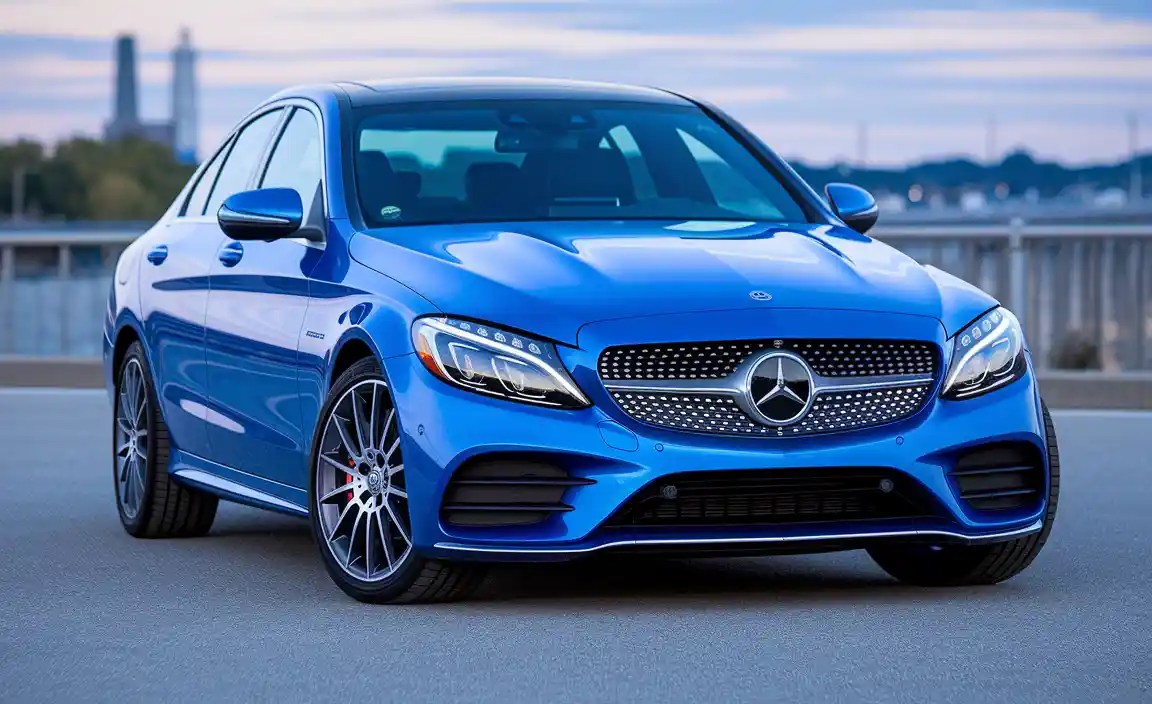
General Trends Across Generations
While we’ve focused on the modern digital display, it’s worth noting the evolution. Older models might only offer analog gauges, while newer ones embrace the digital wholeheartedly. It’s less about trim-specific differences in type of display in recent years and more about the features and level of integration available.
Example: C-Class Coupe vs. Sedan
In many cases, the core functionality and design ethos of the instrument cluster remain consistent across C-Class body styles (sedan, coupe, convertible, estate). The primary differences might lie in how the information is presented or the availability of certain display themes, rather than a fundamentally different hardware setup. However, specific packages or optional upgrades could influence the display size or capabilities.
Optional Packages Impacting the Cluster
Certain optional packages, particularly those focused on technology or premium interiors, can enhance the digital cluster experience. For instance, a “Premium Plus” package might include a larger screen size (if applicable across generations) or unlock advanced MBUX features that are directly reflected in the cluster’s display capabilities. Always check the specific options list for the vehicle you are interested in.
Table: C-Class Instrument Cluster Evolution
| Generation | Typical Display Type | Key Features |
|---|---|---|
| W202 (1993-2000) | Analog Dials | Speedometer, Tachometer, Fuel, Temp gauges. Basic trip computer. |
| W203 (2000-2007) | Analog Dials with small LCD | Enhanced trip computer, basic warning messages on LCD. |
| W204 (2007-2014) | Analog Dials with larger LCD | More advanced driver information, media details, and ADAS visualization beginnings. |
| W205 (2014-2021) | Optional Fully Digital (later models) or Analog with LCD | Introduction of fully digital clusters in higher trims, advanced MBUX integration. |
| W206 (2021-Present) | Standard Fully Digital | Large, high-resolution displays, extensive customization, advanced MBUX 2.0 integration, enhanced ADAS visualization. |
Maintaining and Maximizing Your C-Class Cluster
Owning a C-Class means enjoying a sophisticated technological marvel. Keeping it in top condition and understanding its features ensures you get the most out of this luxury element.
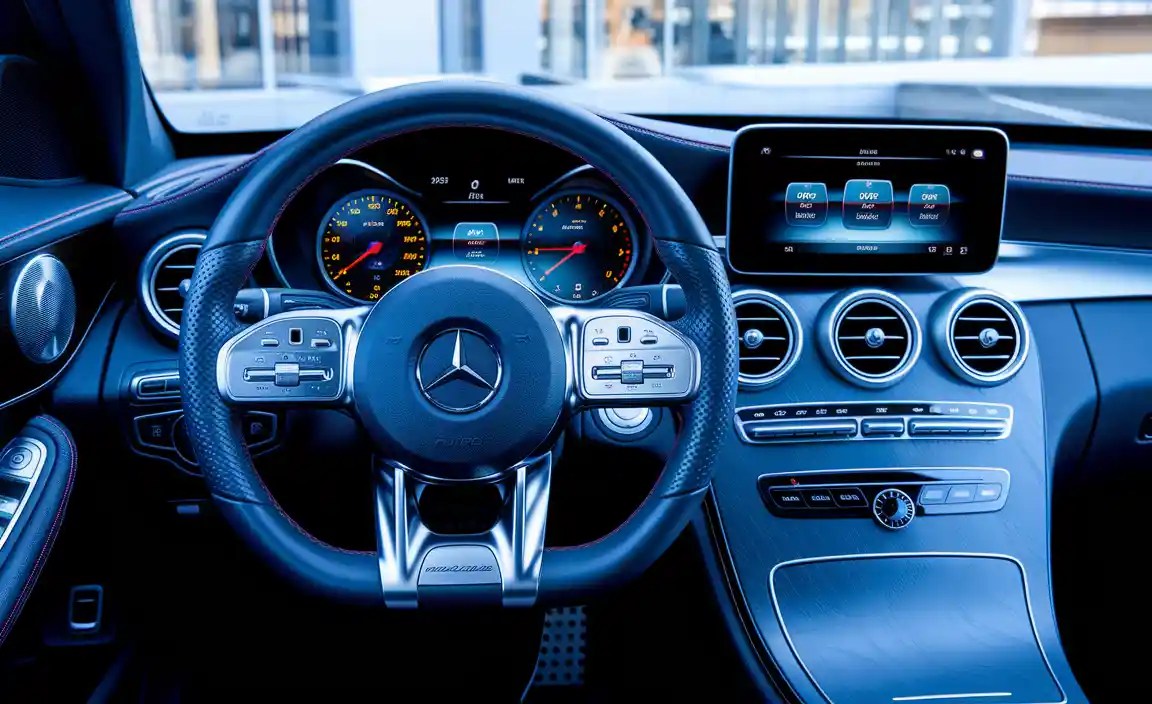
Software Updates
Like any advanced digital system, the MBUX infotainment and the instrument cluster software can receive updates. These updates are crucial for performance improvements, bug fixes, and the introduction of new features. Your Mercedes-Benz dealer can typically perform these updates during scheduled service appointments. In some cases, over-the-air (OTA) updates might be available, allowing your car to update itself wirelessly. Consult your owner’s manual or the Mercedes me portal for details specific to your vehicle.
Cleaning and Care
The large digital screens are sensitive. To clean your C-Class instrument cluster:
- Power Down: If possible, turn off the vehicle and the display to avoid accidental inputs and to see smudges better.
- Use the Right Cloth: Always use a soft, lint-free microfiber cloth. Avoid paper towels, tissues, or abrasive materials, which can scratch the screen.
- Avoid Harsh Chemicals: Do not spray cleaning solutions directly onto the screen. Lightly dampen a small section of the microfiber cloth with a specialist electronics cleaner or a solution of distilled water and a tiny amount of mild dish soap.
- Gentle Wipes: Gently wipe the screen in a consistent direction (e.g., horizontal or vertical). For stubborn marks, you might need a few passes, but don’t scrub.
- Dry Thoroughly: Use a dry part of the microfiber cloth to gently buff away any remaining moisture or streaks.
A reputable resource for automotive interior care products can be found at detailed retailers like AutoGeek’s microfiber towel selection, offering a variety of options suitable for delicate automotive surfaces.
Understanding the Controls
Familiarize yourself with the controls on your steering wheel, typically the touch-sensitive buttons or scroll wheels. These are your primary tools for interacting with the instrument cluster. Spend some time in a parked car, cycling through the different menus and display options. The owner’s manual is your best friend here, providing detailed explanations of each function and control.
Personalizing Your Experience
Don’t be afraid to experiment with the different display themes and layouts. What one driver finds ideal, another might not. Take the time to set up your preferred layout for daily driving, sporty excursions, or long road trips. You can always change it back if you decide you prefer something else.
Conclusion
The C-Class instrument cluster is far more than just a way to check your speed; it’s a sophisticated piece of design and engineering that embodies the luxury and innovation synonymous with Mercedes-Benz. From its evolving forms, from classic analog beauty to cutting-edge digital dynamism, the cluster has always aimed to enhance the driver’s connection with their vehicle.
The modern iterations, with their crystal-clear displays, deep customization options, and seamless MBUX integration, truly represent the ultimate in luxury automotive interfaces. By understanding its design principles, appreciating its functionality, and knowing how to care for it, you can ensure that your C-Class’s digital heart continues to beat with elegance and precision for years to come.
Frequently Asked Questions
Q1: Is the C-Class instrument cluster always a digital display?
A1: In the latest generation (W206, 2021-present), a fully digital instrument cluster is standard across all C-Class models. Earlier generations featured analog dials, with digital screens becoming more prominent and optionally available in later models of those generations.
Q2: Can I change the appearance of the C-Class digital instrument cluster?
A2: Yes, the C-Class digital instrument cluster is highly customizable. You can typically choose from several display styles (like Sporty, Progressive, Classic) and arrange certain data widgets to suit your preferences.
Q3: What is MBUX, and how does it relate to the instrument cluster?
A3: MBUX (Mercedes-Benz User Experience) is the advanced infotainment system in modern Mercedes-Benz vehicles. The instrument cluster is an integral part of MBUX, displaying information from the system, such as navigation, media, and vehicle status, in a visually engaging way.
Q4: How do I update the software for my C-Class instrument cluster?
A4: Software updates are usually performed by a Mercedes-Benz dealership during a service visit. Some vehicles may also receive over-the-air (OTA) updates for the MBUX system, which can include updates for the instrument cluster.
Q5: What are the benefits of a digital instrument cluster over traditional analog gauges?
A5: Digital clusters offer greater flexibility in displaying information, allowing for customization of layouts and themes. They can present more data dynamically, integrate advanced graphics for driver assistance systems, and provide a more modern, high-tech aesthetic.
Q6: How should I clean the digital display of my C-Class instrument cluster?
A6: Use a soft, lint-free microfiber cloth. Lightly dampen it with a specialized electronics cleaner or distilled water. Never spray liquid directly onto the screen, and avoid abrasive materials or harsh chemicals.
Q7: Do all C-Class models have large, widescreen displays for the instrument cluster?
A7: The size and aspect ratio of the digital display can vary slightly by model year and specific package. However, the current generation of C-Class (W206) features a generous, high-resolution display designed for a luxurious cockpit experience.






